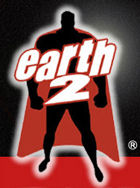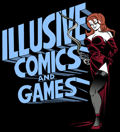Piecing Together Convergence
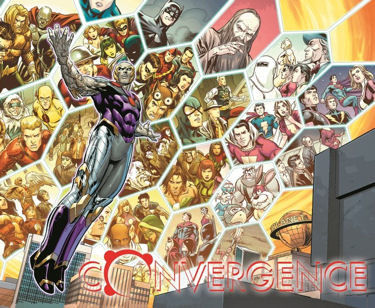 We're at the half-way point this week, where DC's latest epic crossover event pits various versions of heroes and villains from different continuities against each other. No, I'm not talking about The Multiversity, which ended this week with a fun but slightly frustrating bang. I mean the frustrating but slightly fun crossover Convergence. We're at the half-way point this week, where DC's latest epic crossover event pits various versions of heroes and villains from different continuities against each other. No, I'm not talking about The Multiversity, which ended this week with a fun but slightly frustrating bang. I mean the frustrating but slightly fun crossover Convergence.
Originally meant to be a quirky placeholder while DC offices moved out west, Convergence morphed into something a little more portentous. Maybe it's because the days you could do a ridiculous crossover event (DC Challenge, anyone?) are just long gone. The readership for the Big Two have come to expect everything to mean something.
And what Convergence means is that DC has some great properties that it just doesn't know what to do with.
In the main book, the heroes of Earth-2, modern revisions of the original Justice Society of America, have barely escaped the destruction of their world at the hands of Darkseid. They've been rescued by Telos, a slave intelligence of Brainiac.
That computerized menace used to go from world to world bottling cities, but in modern times he had to up his game. Instead, he domes off cities (still sort of a bottling) and places them on Telos' world. Each city is self-sufficient (barely), with its inhabitants absolutely puzzled as to what has happened. And instead of different worlds, they're all Earth cities from different realities (or continuities) -- though an awful lot of them are either Gotham City or Metropolis.
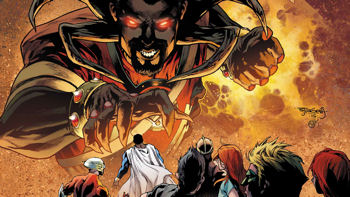 For some strange reason, the lost world of Skartaris, sort of the DC Universe version of Edgar Rice Burroughs' Pellucidar, is also one of those cities. That was revealed this week, though the hint was there in issue #3 when the Earth-2 inhabitants encountered Deimos. For some strange reason, the lost world of Skartaris, sort of the DC Universe version of Edgar Rice Burroughs' Pellucidar, is also one of those cities. That was revealed this week, though the hint was there in issue #3 when the Earth-2 inhabitants encountered Deimos.
Telos reached the odd conclusion that all these cities need to fight with each other in order to determine which "reality" should prevail (though there's also been a throwaway remark that, of course, everything is just an inferior offshoot of the current New 52 version, an idea that DC editorial has been trying to push from the very beginning).
So after a push three and a half years ago to get new readers, DC takes two months to devote to the old readers they actually pushed away. You have to go way back to know about Skartaris from Mike Grell's The Warlord, and there are hints that several time traveling characters who have been negated by The New 52 are floating around, many of them the main villains from previous crossovers.
Which brings us to the satellite books that tell the stories of these cities having to clash.
In issue #4 of Convergence, Deimos recognizes the Earth-2 Flash as Jay Garrick, and writer Jeff King has the villainous sorcerer acknowledge that there has been one floating around realities from the beginning (of superheroes, we'll assume). And so this week you can see the last hurrah of the original Jay Garrick, aging and depowered by the dome around Gotham City in Convergence: Justice Society of America #1.
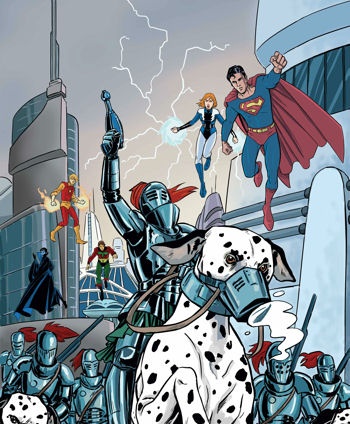 Most of the tie-in books have dealt with that same problem -- a year under the dome, and some have made very good use of it. Combining older writers with edgier artists, DC has allowed creators some freedom to visit beloved eras and continuities, and show just why those characters are thought of so fondly. So you can have elderly JSAers, who are clearly chafing at a forced senescence, and feel like you're visiting old friends. Most of the tie-in books have dealt with that same problem -- a year under the dome, and some have made very good use of it. Combining older writers with edgier artists, DC has allowed creators some freedom to visit beloved eras and continuities, and show just why those characters are thought of so fondly. So you can have elderly JSAers, who are clearly chafing at a forced senescence, and feel like you're visiting old friends.
What nobody at DC seems to want to come out and admit is that things might have come full circle. The first big crossover, Crisis on Infinite Earths in 1985, was meant to streamline continuity so that only one reality existed (though Marv Wolfman did leave a bathroom window open). DC could move forward with an interconnected universe that was just one universe. It also didn't just come out of nowhere, carefully planned and hinted at in various books for over a year before it happened, but that's a different complaint.
The Convergence tie-in books highlight today's market reality without truly acknowledging it. New readers enjoy reading specific books, not specific companies, when the concepts engage them. But they will be loyal to a company that has figured out a way to offer them those books (see Image's success with The Walking Dead, Saga, Lazarus, Sex Criminals, etc. without yet stooping to an event to merge them all together).
So DC is playing with some beloved old concepts that should be just standalone books. Why haven't their umpteen revivals of Superboy and the Legion of Superheroes not worked? Because we like the version that we see here, that doesn't fit in with current continuity rules because Superman was never Superboy. And throw them against The Atomic Knights? Please. There's got to be a way to just tell an Atomic Knights story -- they ride giant dalmatians, for gosh sakes! There's a great concept there that just stands on its own!
This week we also got Convergence: Plastic Man and the Freedom Fighters, a book that once again also proves that the best way to avoid having to torturously reimagine characters to fit into your new reality is to just leave them in their original one. Okay, so Roy Thomas pretty much recreated them this way in the first place but... you don't think there's a viable ongoing book set on a world where the Nazis won World War II? It's a concept so mindthumpingly obviously cool that Grant Morrison used the same characters (different approach) for The Multiversity.
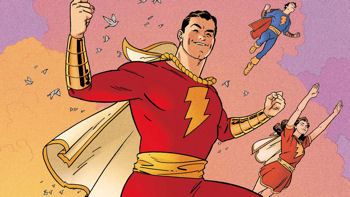 And my favorite -- also used by Grant Morrison for The Multiversity's Thunderworld -- this week DC released Convergence: Shazam! And my favorite -- also used by Grant Morrison for The Multiversity's Thunderworld -- this week DC released Convergence: Shazam!
Straight up, don't give me issue #2 in which the Marvel Family will have to fight the world of Gotham by Gaslight. Just give me an ongoing with the creative team of Jeff Parker and Evan "Doc" Shaner.
Parker has long been a writer with a particularly adept skill at combining the original flavor of classic comics' characters with the modern need to raise the stakes (see Batman '66, Agents of Atlas, and King's Watch). He references back to DC's original relaunch of Captain Marvel, brings in all the core characters, including the talking tiger Tawky Tawny, and calls forth everything that made them appealing in the first place.
Billy Batson can be street-smart and innocent; you'll believe that Fawcett City can have a boy reporter who radiates goodness. You'll believe a tiger can act like a man. And sure, that there's a subneanderthal warrior king that somehow has an extreme facility with creating high-tech weaponry. It's all part of the magic of Shazam!
That also works because of Shaner's artwork. It somehow melds the different styles of the major Marvel Family artists of the 40s -- C.C. Beck, Kurt Schaffenberger, and the undersung Mac Raboy -- into one cohesive look that serves all of them.
And that's the sad part of Convergence, for now. This is all in the service of a stunt event, instead of creating good ongoing books. This Shazam would be great, though it's at odds with the version being developed by New Line Cinema. A Freedom Fighters book, a classic Legion of Superheroes? Worth a shot. Even Keith Giffen's take on '90s continuity with Supergirl Matrix might be a fun revisit, because it has an idiosyncratic point of view.
Think about it, DC. Because the only Convergence you really want is all of us at the comics shop.
|
 We're at the half-way point this week, where DC's latest epic crossover event pits various versions of heroes and villains from different continuities against each other. No, I'm not talking about The Multiversity, which ended this week with a fun but slightly frustrating bang. I mean the frustrating but slightly fun crossover Convergence.
We're at the half-way point this week, where DC's latest epic crossover event pits various versions of heroes and villains from different continuities against each other. No, I'm not talking about The Multiversity, which ended this week with a fun but slightly frustrating bang. I mean the frustrating but slightly fun crossover Convergence. For some strange reason, the lost world of Skartaris, sort of the DC Universe version of Edgar Rice Burroughs' Pellucidar, is also one of those cities. That was revealed this week, though the hint was there in issue #3 when the Earth-2 inhabitants encountered Deimos.
For some strange reason, the lost world of Skartaris, sort of the DC Universe version of Edgar Rice Burroughs' Pellucidar, is also one of those cities. That was revealed this week, though the hint was there in issue #3 when the Earth-2 inhabitants encountered Deimos. Most of the tie-in books have dealt with that same problem -- a year under the dome, and some have made very good use of it. Combining older writers with edgier artists, DC has allowed creators some freedom to visit beloved eras and continuities, and show just why those characters are thought of so fondly. So you can have elderly JSAers, who are clearly chafing at a forced senescence, and feel like you're visiting old friends.
Most of the tie-in books have dealt with that same problem -- a year under the dome, and some have made very good use of it. Combining older writers with edgier artists, DC has allowed creators some freedom to visit beloved eras and continuities, and show just why those characters are thought of so fondly. So you can have elderly JSAers, who are clearly chafing at a forced senescence, and feel like you're visiting old friends. And my favorite -- also used by Grant Morrison for The Multiversity's Thunderworld -- this week DC released Convergence: Shazam!
And my favorite -- also used by Grant Morrison for The Multiversity's Thunderworld -- this week DC released Convergence: Shazam!

